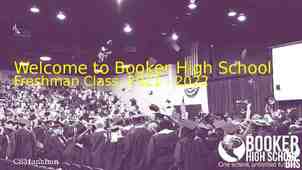Mullen Scales of Early Learning Stephen R. Hooper, Ph.D. University
28 Slides149.00 KB
Mullen Scales of Early Learning Stephen R. Hooper, Ph.D. University of North Carolina School of Medicine
Advanced Organizer Mullen characteristics and features Materials needed Administration guidelines Record form completion Scoring considerations Individual scales
Characteristics of the Mullen A revision of the Mullen Scales of Early Learning Individually administered Age ranges from birth through 68 months The Mullen is untimed, but administration time varies depending on age and other child characteristics (typically 15 minutes for 1-year olds, 30 minutes for 3-year olds, and 60 minutes for 5-year olds.
Characteristics of the Mullen Taps five key domains: – – – – – Gross Motor Visual Reception Fine Motor Receptive Language Expressive Language Provides standard scores (M 50, SD 10), percentile ranks, and age equivalents for each of the five domains and the single composite (M 100, SD 15).
Characteristics of the Mullen Must obtain a basal (a criterion in which all items below it are assumed to be passed) and a ceiling (a criterion in which all items above it are assumed to be failed) on each scale. A basal level of 3 consecutive items with at least a 1-point score. A ceiling level of 3 consecutive items with scores of 0.
Features of the Mullen Scales High interest materials Provides a profile of cognitive abilities Provides a wide range of scores Based on developmental theory Can be used for special education eligibility placement as well as individualized program planning.
Materials You Need to Supply 3 or 4 Cherrios Crayon Several sheets of 81/2” x 11” white paper Several sheets of 51/2” x 81/2” white paper Several sheets of 8” x 8” paper Several strips of 1” x 4” construction paper Several strips of 2” x 6” construction paper 10-foot colored tape or white chalk line
Materials You Need to Supply 1 nickel 1 dime 1 quarter 10” to 12” ball 6” high bench Staircase or portable stair unit of at least 4 to 6 steps Additional toy or toys
Administration of the Mullen: General Guidelines Gather information as quickly as possible on how the child learns--level of attention and ability to imitate help in this regard Observe the infant for their receptive and expressive capabilities Provide positive reinforcement and encouragement, but don’t give hints Do not over verbalize Try to control the pace of the testing
Administration of the Mullen: General Guidelines The testing room should be appropriate to the age of the child (e.g., a table for an infant, small table/chair for preschoolers) Have all necessary testing materials Positioning is critical (listed on record form) Follow standardized procedures
Administration of the Mullen You will need the Item Administration Book, the Stimulus Book, a Record Form, and the other noted materials. Be sure your kit is in order prior to each administration (e.g., Appendix B of the Manual contains blackline masters of stencils that the examiner can use to create some of the needed materials Explicit directions for administration are provided in the Item Administration Book
Administration of the Mullen SAFETY FIRST! Examiners should be careful to keep small manipulatives out of the mouths of the children Generally, if you are not working with specific materials, then they should be put back into the kit and away from the child NEVER leave a baby/child unattended
Mullen Scales: Administration Considerations Administer scales and items in order since they are presented in order of difficulty HOWEVER, flexibility is permissible and should be liberally used to obtain responses Try to pick a good starting point for each child Many items include a demonstration of the task
Mullen Scales: Completing the Record Form The inside pages include five sections--one for each Mullen Scale 8 bands of alternating color appear on the Gross Motor Scale, with a developmental stage noted to the left The item column shows the item number and a brief description of its content For early items, a cue at the end of the descriptions shows the required position of the child
Mullen Scales: Completing the Record Form Record study identification #, gender, examiner, gestational age, site, vision or hearing problem, test date, birth date, and chronological age – Outside of birth date, enter no other identifying information. Unlike other tests, do not round 15 or more days to the next higher month
Mullen Scales: Completing the Record Form If the child was premature, an adjusted age should be calculated Adjusted Age CA - (40-GA) This should be recorded under the Adjusted Age line on the record form Completely correct only until 12 months of age; 1/2 correction from 13-23 months; then no correction from 24 months and older
Mullen Scales: Completing the Record Form Blue flags show suggested starting points for children within a normal range of development (use for adjusted ages too) If there are any developmental concerns, then a lower starting point can be used Several items on the Receptive Language and Visual Reception scales are marked A/V, indicating that they require auditory-visual integration
Mullen Scales: Scoring Considerations Administer the starting item followed by the next two items If the child scores at least 1 point on each of the 3 items, the basal level has been established If the child does not score at least 1 point on each of the first three items, move back to the next lower starting point (black flags) and continue.
Mullen Scales: Scoring Considerations Go back as far as is necessary to establish a basal level Once established, credit the child with maximum points for all items below the basal item Continue testing until the child obtains zero points on 3 consecutive items (ceiling level) Add all items passed, including items below basal, and place in box at bottom of form
Mullen Scales: Item Completion Record item responses and scores on the record form, paying attention to whether a 0, 1, or 2 level response is required For some items, a small number appears in parentheses just below each score point as a reminder of the necessary performance Other items include brief statements “Sum Tasks” requires adding the tasks passed to obtain the item score
Mullen Scales: Special Scoring Considerations Multiple responses - Provide child with all of the presented responses and ask which one it was Refusal to respond - switch tasks or, if it is clear that the child will not respond, record a 0 and write the letter R next to it to denote a refusal
Characteristics of the Mullen: Gross Motor Scale Administered from birth through 33 months – This should take into account chronological age as well as adjustments for prematurity 35 items measures: – Central motor control – Mobility in supine, prone, sitting, and upright At about 30 months, a distinction is made between unilateral and bilateral control.
Characteristics of the Mullen: Visual Reception Scale Administered from birth through 68 months 33 items Primary abilities tapped include: – – – – – Visual discrimination Visual memory Visual organization Visual sequencing Visual spatial awareness
Characteristics of the Mullen: Fine Motor Scale Administered from birth through 68 months 30 items Primarily concerned with output Items measure: – Motor planning and control – Unilateral and bilateral manipulation – Writing readiness
Characteristics of the Mullen: Receptive Language Scale Administered from birth through 68 months 33 items Measures a child’s ability to process linguistic input. Taps: – Auditory comprehension – Auditory memory – Auditory sequencing
Characteristics of the Mullen: Expressive Language Scale Administered from birth through 68 months 28 items Measures a child’s ability to use language productively Primary abilities tapped include: – Speaking – Language formation – Verbal conceptualization
Characteristics of the Mullen: Early Learning Composite Provides a measure of general intellectual functioning It is derived from four of the cognitive scales (Visual Reception, Fine Motor, Receptive Language, Expressive Language)
Odds and Ends Send along COMPLETED forms – Be sure to check them for completion before the family leaves If there are ESL issues, you will need an interpreter to administer the Mullen – Not currently administered to non-English speaking subjects. Questions? Contact me directly via email (Stephen [email protected]) or phone (919-966-9040)

































